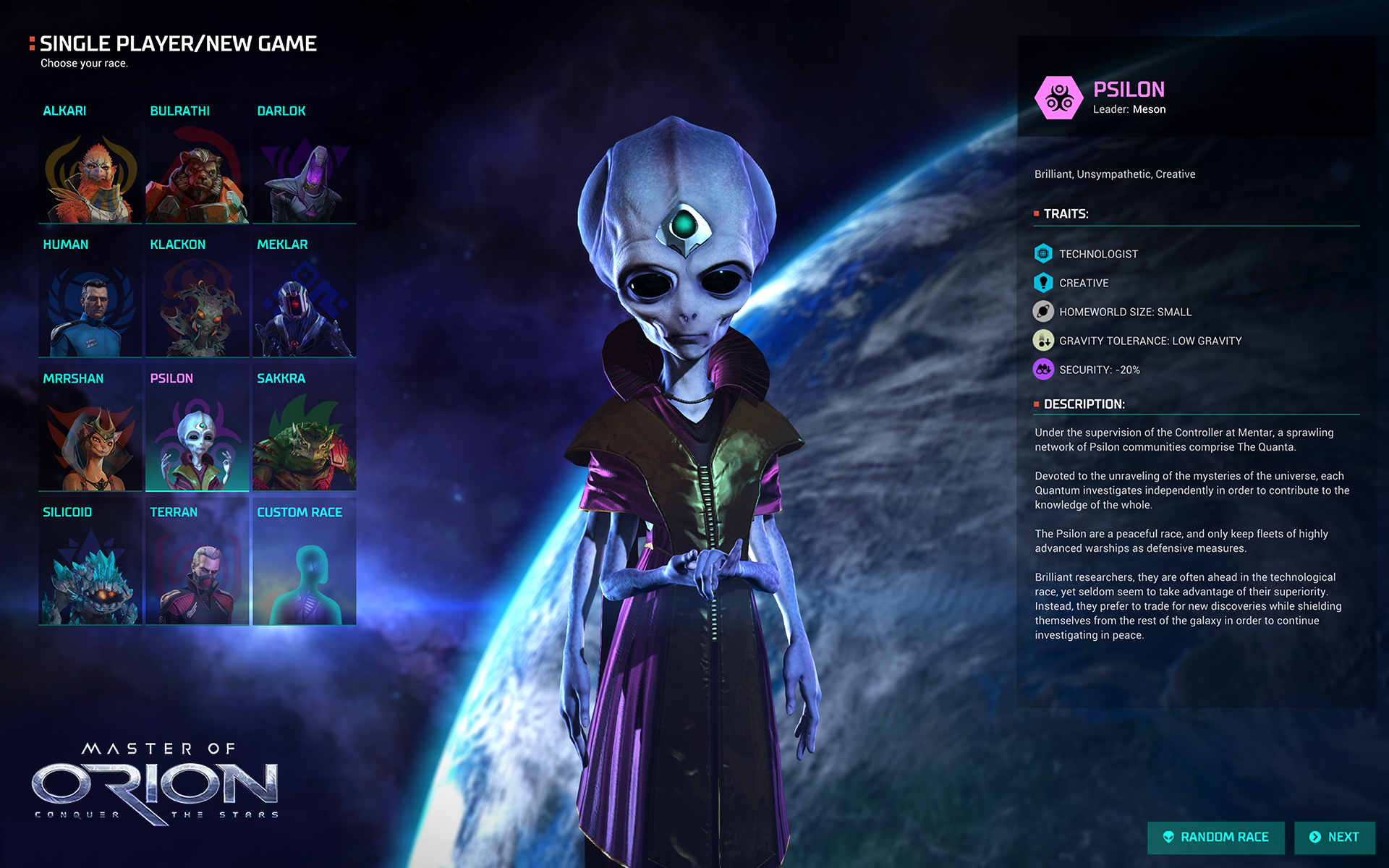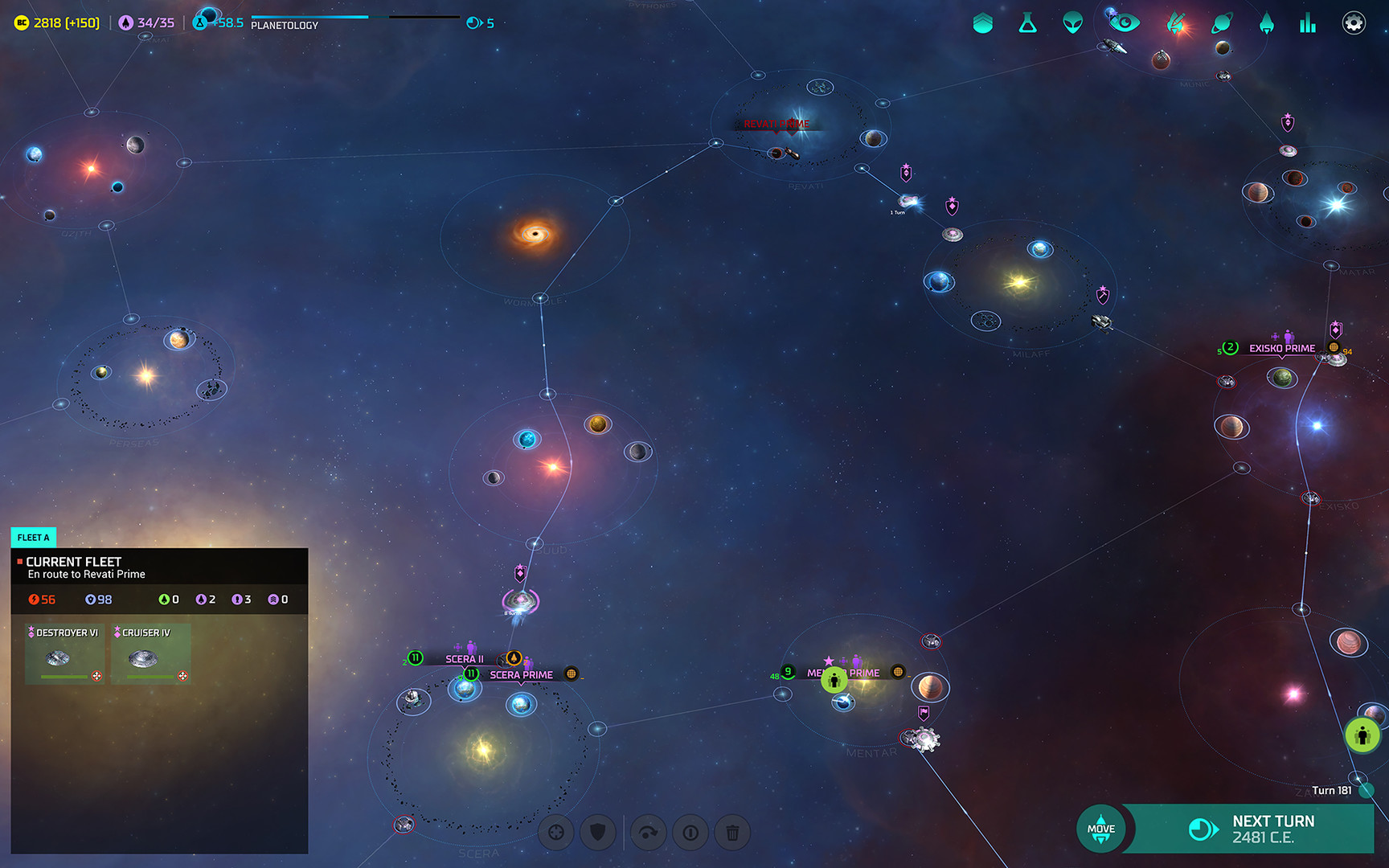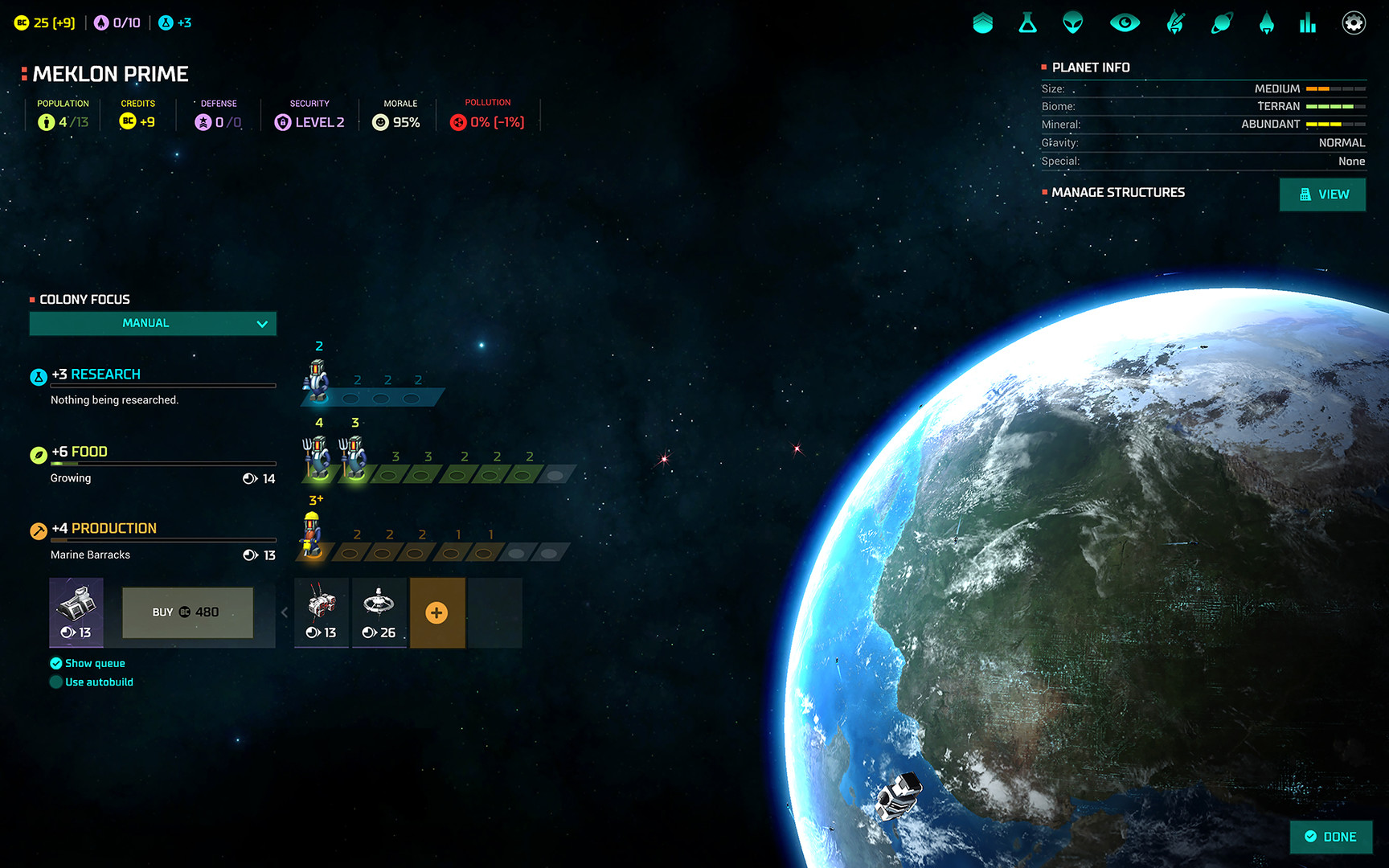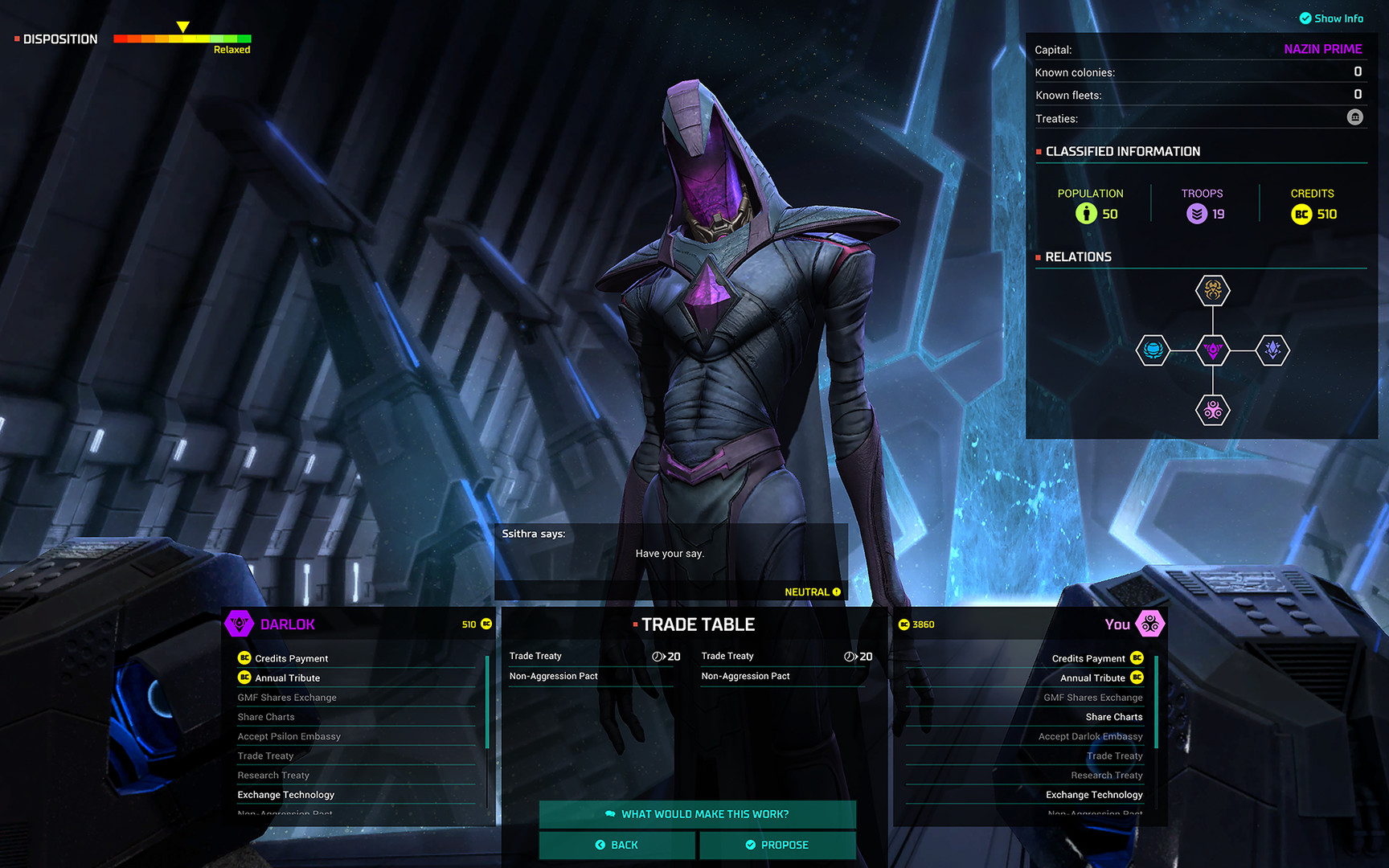At the end of August, a full-fledged release of the new Master of Orion, developed jointly by NGD Studios and Wargaming, took place. About how the game was being developed, App2Top.ru told Alexander Zezyulin, R&D Operations Director at Wargaming.

Good afternoon! First of all, congratulations on the long-awaited release of Master of Orion. As far as I know, this is not so much another part of the game as a restart of the series from scratch, right?

Alexander Zezyulin
Thank you for your congratulations! You’re right: when creating this version of Master of Orion, we relied on the first two parts of the game, but the goal was a kind of re-release of the original version. At the same time, we first of all wanted to introduce a new generation of players to the classic strategy, which has become one of the founders of the genre of global strategies in general.
I’ll come a little bit from afar. I understand that you have told this story more than once, but let’s repeat it. How did it all start? How did it happen that the Argentine studio NGD Studios, which previously made MMO and action games, took up Master of Orion?
The story is as follows: the NGD team – avid fans of Orion – at some point undertook to make a prototype of a similar game. And then the news arrived that Wargaming had bought the rights to the Master of Orion brand and the previous games in the series. After learning about this, NGD Studios presented its developments to us. In general, the stars came together. The history of NGD has a lot in common with Wargaming – before the latter released World of Tanks. This is an old experienced studio, leading in terms of potential and opportunities in its region, having its own culture and at the same time not losing the fire in the eyes and hearts during its life and work. This is close to us, and we like to work with such people.
By the way, if it’s not a secret, did Wargaming buy NGD Studios?
No, the studio is an independent partner of Wargaming and works with us under a contract for the development of a specific product.
At what stage was the initial build of the project that was proposed by Wargaming?
In the initial prototype, a simplified map of the galaxy was presented, on which it was possible to move troops and fight an AI opponent. There was no strategic part and no economy, but there were already tactical battles. I must say that there is nothing left of the first version in the release at all. Even the art direction has changed significantly since then.

Were there any decisions in the original build that was decided to be removed immediately (and what were those features)?
No, there were no such decisions. Full-fledged pre-production of the project began later, when the studio signed a contract with Wargaming.
How many people were in the project team before the start of cooperation with Wargaming? How much has she grown since then?
The size of the NGD team within the framework of working on the project has changed slightly and remains in the range of 40 and a little people. At the same time, the Wargaming team and remote project consultants periodically grew quite a lot.
And how many people from both sides were involved in creating the game?
It is difficult to give exact figures, but I think that at the peak about 65 people worked on the project, counting remote employees.
I think many people would be curious to know how the roles in the development team and the publisher were distributed over the project (and who was responsible for what)?
At the start of work on Master of Orion on the Wargaming side, there was a small team working directly with the studio in Argentina and Viktor Kisly as the ideologist of the project. Most of the design decisions were then made after long collective discussions, there was no dictate of any one participant. Gradually, control over the project was transferred to the Wargaming office in Austin, at the same time, consultants from among the creators of the original series of games joined Orion. A little later, a representative of the publisher (Wargaming) joined the Austin team, and from that moment the international project team began to grow in the regions (game community management, user support, etc.). The release of the game was handled by the Wargaming and WG Labs teams in Minsk, Austin and the headquarters in Nicosia.

How was the process of interaction between the teams built (how independent were the Argentines in decision-making, how often did they call the producer, how much did he control them, did they coordinate each art with Wargaming)?
It was very important for us to unleash the creative potential of the studio, and not just use it as a group of hired workers doing everything according to the plan we had planned. Interaction with the studio was almost daily, we often visited the NGD Studios office, met at gaming industry events. Cooperation of this kind excludes the very concept of control. We have been and remain colleagues on the way to creating and releasing a product. Nevertheless, some coordination, of course, took place. On design issues, the studio often consulted with Austin and the authors of the original series. According to the appearance of the game, we consulted a lot with the artist of the original version of Master of Orion. UX and UI have passed many tests at Full Sail University (Orlando, USA), where Wargaming supports the development of the UX laboratory.
Which of the creators of the original trilogy was involved in the development of the game? How close was the cooperation (is there a story about how an expert suggested something and it was eventually implemented)?
In the first two issues of the developer diaries, you can see which of the creators of the original version of the game was involved in the project.
The cooperation was very close. The lead artist of the very first Orion, Jeff Dee, constantly advised the art director of the new game from NGD while working on races and their subject environment (ships, environment, etc.). The author of the music of the first Master of Orion, David Govett, wrote all the music for the new version. The producer of the first Orion, Jeff Johannigman, participated in all discussions of the product design.
By the way, Sergey Lukyanenko’s fan fiction “Line of Dreams” based on Master of Orion became widely known in Russia at the time. Why did you decide not to involve the writer in cooperation (for example, to offer him to republish fan fiction already under the Master of Orion brand)?
For a number of reasons, we decided to abandon this option of cooperation.
The question I’m going to ask now most likely falls under the NDA, but I can’t not ask it. What KPIs regarding sales volume were set before the project (or, if you can’t name the exact figures, have they been met or not yet)?
Unfortunately, I can’t answer this question. The main task for us was to return the game to its fans. In addition, we wanted to revive the legend and make Victor’s long-standing dream come true. We did not have a goal to earn fabulous sums on it.
Let’s get back to development. Personally, I really liked the approach to the UI in the game: neat, minimalistic, radically different from both the heavy interface of the first two parts by today’s standards, and from the UI in Master of Orion 3, which resembled Excel in the style of Star Trek in the mid-90s. Can you tell us how the interface evolved when creating the latest Master of Orion?
Viktor Kislyi made a significant contribution to the overall interface design at the first stage of work on the game. We redid some layouts many times before he was satisfied with the result (and then, having got into the taste, we already redid them on our own initiative). There were a lot of hand-drawn sketches on the board, loud arguments, Skype calls, sharing layouts and sketches already on top of layouts. A huge merit in the creation of the final interface belongs to the mentioned UX laboratory, in which the tests were conducted.

By the way, which of the previous parts did you focus on most when developing the game?
On the first and second parts.
Fans of the original version of Master of Orion scold the project for having too much influence of Endless Space and the latest parts of Civilization. Is it so? And if so, why?
The genre of global strategies does not stand still. At one time, many games borrowed ideas from Master of Orion, so I would call “reverse borrowing”, a kind of cultural exchange. Let’s be honest, hardly fans of the original part are playing it today, it’s a very old game.
When working on games, studios adhere to different approaches to graphics. As a rule, a lot depends on the target audience. Tell us how Wargaming characterizes the audience of the new Master of Orion and, based on this, what kind of graphics did you decide to make in the game?
We wanted to expand the audience of the game beyond just fan and hardcore. Therefore, both the graphics and the interface are quite light, bright, even kind. At the same time, we tried not to lose the atmosphere of the series, which is very important for fans: the appearance of races, branded humor. Especially humor.
In general, how long did it take to go from the first version of the game to the launch within Early Access?
About two years. The deadlines are somewhat blurred, because due to our reverent attitude to the legend, we carefully verified each decision.

Why did you start with Early Access at all? It always seemed to me that this technique is resorted to by studios that have run out of money to bring the project to release without starving to death.
It was the idea of WG Labs. As a publisher, it is important for us to gain experience on platforms like Steam and GoG with a premium product. WG Labs released the first game through early access and active interaction with the audience in order to refine the game. The second game, Hybrid Wars, we release without early access, a quick blitz release. This is how we gain a diverse experience of interacting with the audience and platforms.
After the release, the game was hit by a wave of harsh criticism from fans of the original trilogy. How does Wargaming advise developers to deal with such a phenomenon in general (except, of course, to drink liters of valerian)?
Critics have been and will be, there’s nothing you can do about it. The main thing is not to fight with those who are not constructive in their criticism. It won’t do anything. Alas, the mechanisms for evaluating and reviewing games on Steam are such that users (and, in particular, spiteful critics) can write anything, and their opinion will be in plain sight. You need to put up with this and just make your product better. Find people in the community who are ready to defend your position and work with them. And the haters will burn out and forget. By the way, I wouldn’t call these people fans of the original trilogy. Fans just bought the game and were happy that the series was being revived.
As far as I know, the project has been scolded and scolded for fights and insufficiently different races. Have you changed anything here or postponed improvements for the future?
Changed. Races are gradually becoming more individualized. This is probably not the last rebalance in the game.

What exactly is the difference (the key differences, of course) between the final version and the version provided in early access?
The final version of the game includes full access to content, additional materials for the owners of the collector’s edition, the opportunity to get a free copy of the classic RTS Total Annihilation and, of course, tons of fixed bugs.
And the last question: the game has a very small price – not a “full price”, so to speak. Why?
The price is regional, in Western markets the game is at the price of AAA projects. Linking the price to regional opportunities is our conscious decision, which is based on the same desire to take the audience beyond the circle of fans of the series.
I see. Thanks for the interview!
